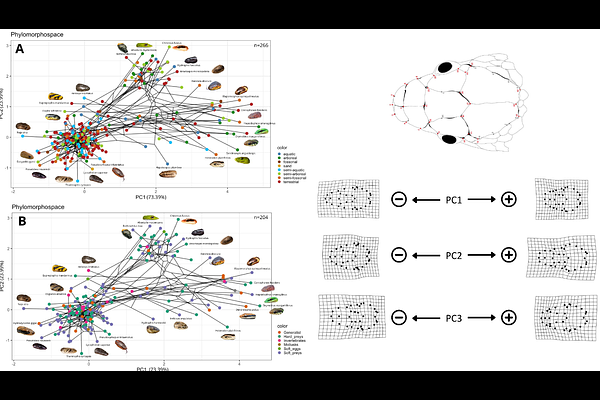Divergent paths, convergent heads: morphological adaptation of head shape to ecological niches in snakes.

Divergent paths, convergent heads: morphological adaptation of head shape to ecological niches in snakes.
Hudry, D.; Herrel, A.
AbstractMorphological convergence - where distantly related species evolve similar traits in response to shared ecological pressures - is a hallmark of adaptive evolution. In snakes, head shape is a key functional trait linked to habitat use and diet, yet the extent and drivers of its convergence across habitat types and diet remain poorly understood. Here, we used geometric morphometric analyses to analyze dorsal head shape from photographs of over 266 snake species, representing ~5% of global snake diversity. Our analyses reveal that head shape variation is only weakly structured by phylogeny and allometry, but shaped by ecological specialization. Morphospace patterns reflect distinct differences in species with different ecologies: fossorial species exhibit compact, broadened heads suited for burrowing; aquatic species show streamlined profiles for hydrodynamic efficiency; and arboreal snakes tend to possess elongated skulls for maneuvering in complex habitats. Terrestrial and semi-fossorial snakes display broad morphospace overlap and an elevated shape disparity highlighting morphological versatility. While diet covaried significantly with head shape, species with similar diets did not exhibit strong morphological convergence. These findings underscore the dominant role of ecology over phylogeny in shaping the evolution of head shape in gape-limited predators like snakes.